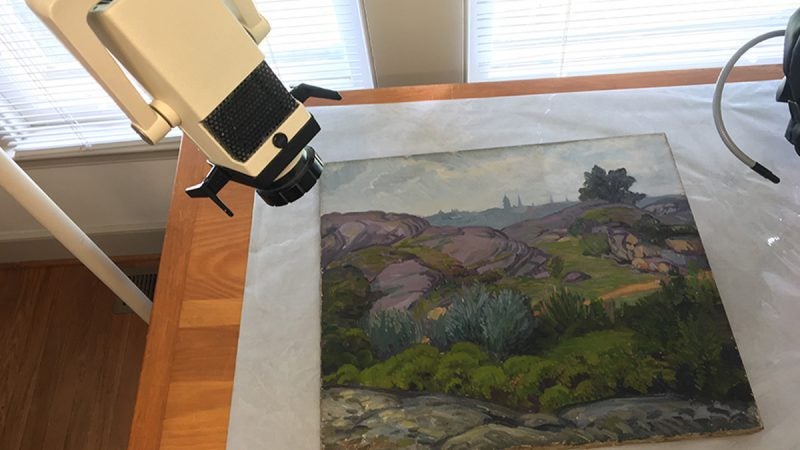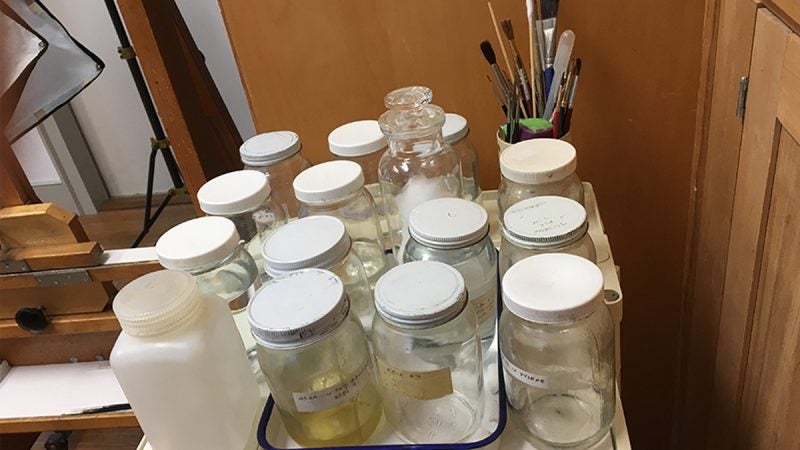Going to the cleaners, Delaware Art Museum’s new exhibit gets some TLC
The Delaware Art Museum is hosting the first major retrospective of John Sloan’s work, but before these paintings went on display, they needed a little cleaning.
Many of the works in The Delaware Art Museum’s new John Sloan exhibit are at least 100 years old, and before they went on the wall, they went out for a good cleaning.
“The pieces in this show are probably on average about 100 years old,” said Heather Campbell Coyle, chief curator at the Delaware Art Museum. John Sloan lived from 1871 – 1951 and some of the pieces in this show have not been shown since the artist’s lifetime. “They need cleaning and care,” Coyle said.
That means a trip to art conservator Mark Bockrath where each painting can take 15 to 40 hours to clean. “We want to reveal as much original paint through cleaning carefully as we can,” Bockrath said. “One issue with the Sloan paintings is that since they are 20th century paintings, there was a period where he was experimenting with different materials.”
Those different materials didn’t necessarily work well together over time, the outcome being a more dingy, muted look to many of the paintings. Bockrath wants any painting he works on to look as close as it can to what would have come off the artist’s easel.
To begin, he must examine the painting to see what damage has occurred, and what the proper course of treatment will be. Sometimes this takes place in the museum and sometimes the work is brought to his West Chester, Pennsylvania office.
Once a plan of action has been agreed Bockrath gets to work. One of his best tools is the microscope. “You can find out a lot by looking at something under the microscope or an ultraviolet light where a lot of repaint and damages will show up.”
Not only can he begin to identify problem areas in the painting where paint may be cracking or beginning to flake off, but he can learn about the artist themselves, in this case, John Sloan. “You can see the artist’s technique and how they constructed it layer by layer.”
Coyle spends months or even years researching the paintings in the museum’s shows, but she learns new things about the artist from the conservator as well. “I learn a lot about technique, how things are made, how the artist is working.”
Bockrath said, for instance, “Sometimes you’ll see a struggle where the artist had to repaint something several times before the final image was arrived at.”
So not only do you get a clean painting from all of this, but the process furthers the knowledge of the artist and their work. “The conservation process has helped me to develop a new respect for some of [Sloan’s] later work and a much better understanding of how he made those works,” Coyle said.
The conservation work will never get the painting back to 100 percent of its original condition as it did when it came off the easel in the 1800s. “You’re always going to have painting that’s a little bit yellower, it’s cracked.”
The restoration done for this exhibit should last well into the future, but perhaps as better techniques come along the work could be undone if necessary. “Everything modern conservators do is reversible, so it can be taken off easily without damage to the paint,” Bockrath said.
The materials used today shouldn’t yellow or crack. “Hopefully, the restorations will last a long, long time.”
Vistors looking at a museum’s exhibit may not think about what that painting looked like before it went on the wall. Coyle has seen what they looked like before and says it’s exciting to see the works all cleaned. “To see them when they’re clean can just be a revelation,” Coyle said.
Bockrath doesn’t want you to think about the restoration work at all. “I don’t want people to go out walk through museums thinking oh that’s Mark’s work.” He would rather you never thought of the painting as needing to be cleaned.
“If you can see the restoration than I’m not doing my job properly.”
WHYY is your source for fact-based, in-depth journalism and information. As a nonprofit organization, we rely on financial support from readers like you. Please give today.












